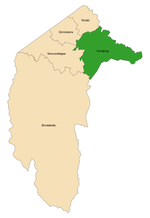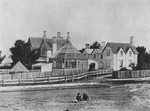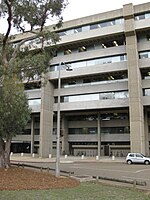Canberra Airport

Canberra Airport (IATA: CBR, ICAO: YSCB) is an international airport situated in the district of Majura, Australian Capital Territory. It serves Australia's capital city, Canberra, as well as the nearby city of Queanbeyan and regional areas of the Australian Capital Territory and southeastern New South Wales. Located approximately 8 km (5.0 mi) from the city centre, within the North Canberra district, it is the ninth-busiest airport in Australia. The airport serves direct flights to all Australian state capitals, as well as to many regional centres across the Australian east coast. Direct international links previously operated from Canberra to Singapore, Wellington and Doha, while direct flights to Nadi, Fiji have operated since July 2023. Canberra Airport handled 3,217,391 passengers in the 2018–19 financial year. Major redevelopment work completed in 2013 included the demolition of the old terminal, replacing it with a new facility designed to handle up to 8 million passengers annually.In addition to serving airline traffic, the airport is also the only public general aviation facility within the Australian Capital Territory. As a former Royal Australian Air Force base, Defence Establishment Fairbairn is located within Canberra Airport and supports government VIP flying operations by 34 Squadron as well as ground handling for itinerant military aircraft and visiting heads of state.
Excerpt from the Wikipedia article Canberra Airport (License: CC BY-SA 3.0, Authors, Images).Canberra Airport
Pialligo Avenue, Canberra
Geographical coordinates (GPS) Address Website Nearby Places Show on map
Geographical coordinates (GPS)
| Latitude | Longitude |
|---|---|
| N -35.306944444444 ° | E 149.195 ° |
Address
Canberra Airport (Canberra International Airport)
Pialligo Avenue
2609 Canberra
Australia
Open on Google Maps








